Sports
Woodshop Teacher Mark Leeper Reflects on His Time at M-A

Mark Leeper’s classes have long served as an outlet for students to express their creativity, connect with peers, discover hidden passions, and simply wind down. “I hope I’ve been able to bring some levity and some sense of camaraderie,” he said. Leeper will retire at the end of this school year, concluding a nearly 40-year career. He has been at M-A since 1987 and currently teaches Woodworking and Architectural Design, in addition to serving as the Career Technical Education Department Chair.
Leeper was inspired by his own teachers to enter education. “I was very lucky to have really good teachers all through school, but especially in high school. I thought if I could do that for somebody else, that would be great,” he said.
He attended the now-inoperative San Carlos High School, which was in the same district as M-A, and competed against the school in swim meets, water polo games, and wrestling matches. “A lot of those teachers had come to M-A when San Carlos closed, and so I was teaching with my former teachers. That was pretty cool,” he said.
Leeper’s path to M-A was all about timing. While earning his teaching credential at Stanford with the intention of becoming a math teacher, he held a student teaching position at M-A. When the previous shop teacher left right before the start of the school year, Leeper seized the opportunity—and he’s been at the school ever since. “I went and applied for the job, and I got it two or three days before school started. I had never taught a shop class before,” he said. “It ended up that I was taking classes at night and teaching during the day to try to figure out what I was going to do. Luckily, I had some people at the other schools who helped me out.”

“The principal we had, Joyce Rosenstiel, was really helpful, very supportive, and understood that it was rough, so she didn’t put any pressure on me. She just wanted me to learn how to do the job, which was great,” he added.
Leeper’s classes have allowed students to express their creativity through hands-on projects. Before settling into Architecture and Woodshop, he also taught Mechanical Drawing, Metal Shop, and Study Hall. “Woodshop can be inspiring, especially when people come up with ideas and can execute them better than I feel like I could. In Architecture, we see a lot of design and creativity. That’s coming from the students. It’s not necessarily what I teach, it’s what they come up with, and they can develop really good ideas,” he said.
Since the Industrial Arts Department consisted of just one class at a time, Leeper began his M-A career as a Department Head. Over a decade ago, he took on a larger role as the Department Head of Career Technical Education (CTE) when those courses were consolidated under one umbrella. In his position, Leeper managed budgets and procedures for a wide range of classes—from Digital Filmmaking to his own Architecture course. “Our electives are not quite as culturally valued as the academic courses and college prep courses, and that makes it a little difficult. If I had to do it again, I probably would try to fight more for some kind of equal footing,” he said.
One of Leeper’s longstanding goals has been to motivate more students to enroll in CTE classes, which he believes offer value beyond what a traditional classroom environment can provide. “You make things with your hands using your brain altogether, and you end up with a valuable product that you can take home and use. It’s not just intellectual stimulation or development. I also think that hands-on learning has been pushed to the side more because colleges don’t require it,” he said.
Since students are able to take Architecture or Woodshop in successive years with rising complexity, Leeper has often been able to watch them grow over time. “I’ve had some similar situations with students whom I’ve had three and four and five classes with. It’s amazing,” he said.

“His sixth period class has been the highlight of my day for three years now, and the community he has built in the architecture class is unmatched to anywhere else on campus,” senior Sofia Basso said.
Leeper also taught Engineering on and off for nearly 10 years. “Engineering was always fun because we’d have these challenges, and people would rise to them. I still have memories of paper towers and catapults that would throw these little balls for what seems like a mile,” he said.
Leeper cherishes M-A’s tight-knit community and the diversity within it. “I really think the staff has been generally good over the years, really a great group of people to work with. The kids are great, but the adults are more consistent,” he said. “Because of what I teach, I’ve been fortunate enough to have a spectrum of all the different kinds of people who go to school here.”
Leeper has watched the school change—both physically, in the construction of new buildings, and culturally, in the mounting pressure placed on students, which he has seen his classes become an outlet for escaping. “I feel like the pressure on students has increased, which is unfortunate, but when they find those outlets, that makes it even more of a relief. It’s a double-edged sword,” he said.
In the late ’90s, Leeper assisted students in building gravity cars for entry in a charity racing competition run by venture capitalists, titled the Sand Hill Challenge. “It was a really goofy, fun adventure,” he said. “That might be the original impetus of any kind of robotics thing. Then the robotics team started a couple years after that.”
He was the FRC Team 766 Robotics team’s advisor at their inception, helping to start the program. He stepped down to prioritize his personal life, but the team still keeps materials and meets in his classroom. “Because it started here, I’ve always shared the space,” he said. Since then, the team has expanded heavily and recently competed in the world championships.
Having taught for so long, Leeper enjoys seeing the impact his class has on former students. “I’ve been fortunate enough to hear what happens to [former students] after, and often you don’t get to see the impact after high school. But sometimes you do, and they’ll tell you there’s a direct connection, and that’s really gratifying,” he said.

“Mr. Leeper is the type of teacher who goes multiple steps above and beyond for his students. If it wasn’t for Mr. Leeper, I would not be going to college for architecture, and I wouldn’t have the love for the trade like I do,” Basso said.
“There is an emphasis on patience, intention, and planning which I feel have overall translated into my out of school life,” senior Bennett Zadig said.
Leeper enjoyed the solitude of the pandemic and decided to retire from teaching on his own terms. “I want to make sure that I have time to do things for myself. I wanted to make sure that I went out with something left to give, instead of running out of gas,” he said.
“My longevity for the time I’ve been here is an indication of what it’s meant to me. If it hadn’t worked out, I would’ve left,” Leeper said.
He looks forward to getting a full night’s rest, fulfilling personal projects, going on bike rides, traveling, seeing friends, and discovering new things. “I started feeling like I’d rather learn than teach,” he said.
With his final year closing out, Leeper’s wish for the future is simple: for the program he has built for decades to continue, and for students to continue bringing their lessons into the world. “That would be the most important thing, and then it’s just up to the students who have been here to carry on the legacy outside, and then the students who come to develop their own. I’m hoping that somebody will come in and embrace the program the way I did, and carry on from here,” he concluded.
Sports
Top honours for national volleyball
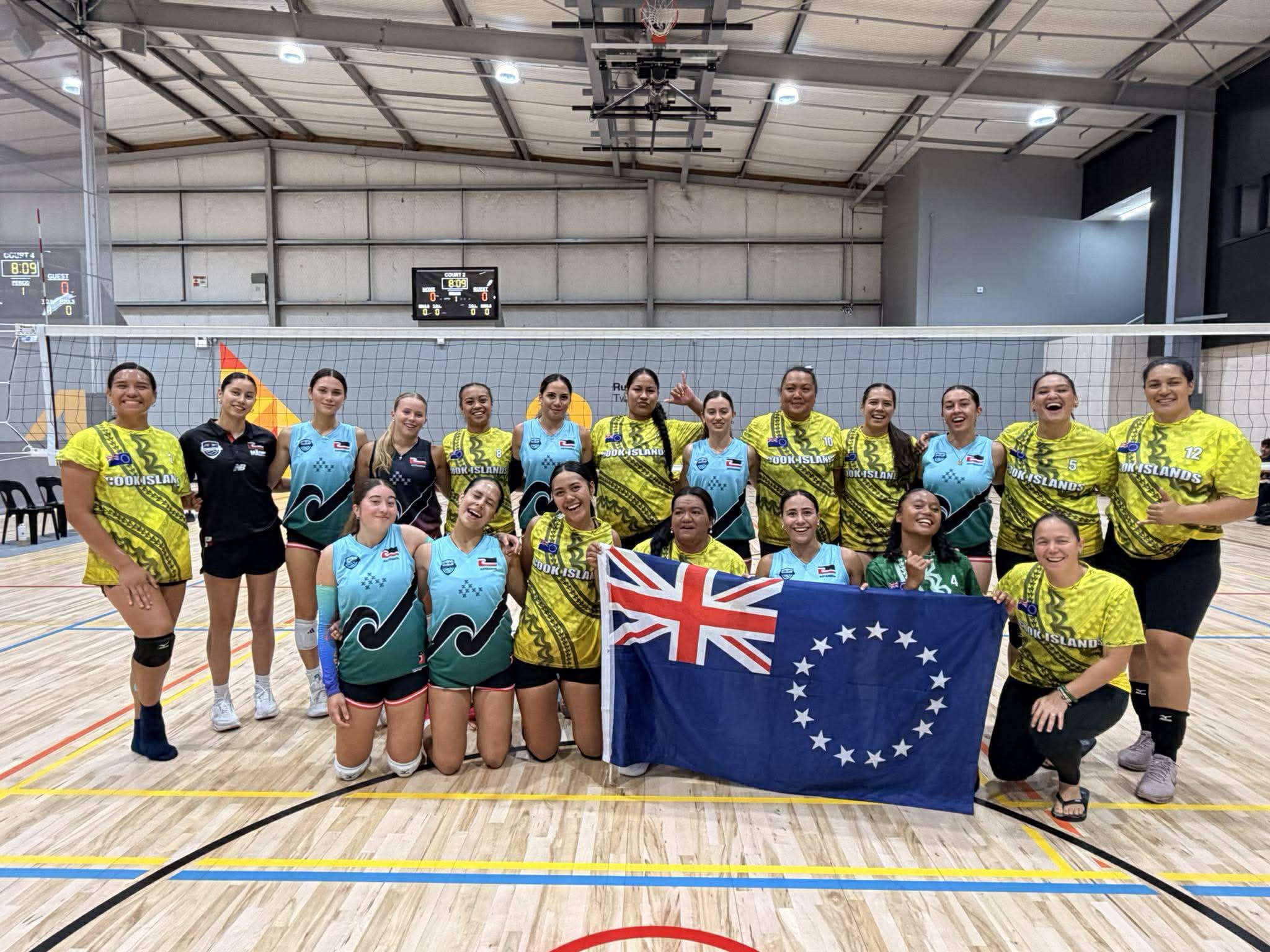

Cook Islands men’s and women’s volleyball teams received recognition at the recent Matariki Cup competition held in Tauranga. CIVF- FIONNA MATUTU/25122401/25122402
The Cook Islands men’s and women’s volleyball teams received recognition at the recent Matariki Cup competition held in Tauranga, New Zealand.
Jackie Rongo, Cook Islands Volleyball Federation (CIVF) development coordinator and women’s coach, received the Coach of the Tournament Award.
“I was blown away and humbled receiving the Coach of the Tournament Award! Even more so, I was very proud of our athletes that achieved individual recognition for their efforts,” Rongo said.
“Each athlete has trained or currently trains under ‘Ātui’anga ki te Tango (AKTT) Volleyball – the team I coach alongside Liam Clegg, who I am extremely thankful to for being on this journey with me.
“Seeing these athletes shine in an international tournament and receive recognition as Cook Islands National Volleyball team players was the cherry on top.”
Rongo said Cook Islands women’s captain Tuaana Mitchell and men’s captain Ryan Nicholson led their respective teams well.
The men’s and women’s teams finished as runners-up, losing to AMP Tipua and AMP Waiariki in their respective finals.
“A special mention to men’s MVP Jacques Koteka and men’s vice-captain, who was part of the very first team I ever coached and is still with AKTT today. He is one of the hardest working athletes I know and it was awesome to see him playing high level volleyball in this tournament.”
Rongo said the 4th Matariki Cup Volleyball Challenge was a true embodiment of the spirit of why this competition was created – “to strengthen our cultural connection and bond across Te Moananui-a-Kiva through our shared love of volleyball.”
With Kōrero o te ‘Ōrau as major sponsor, the tournament was held in Rarotonga in 2022 and 2023, hosted by the Cook Islands Volleyball Federation. Last year, it was hosted by Volleyball Tahiti and this year it was held in Tauranga, New Zealand, hosted by Aotearoa Maori Poirewa.
Rongo said the Aotearoa Maori Poirewa (AMP) under the direction of Ngākohu and Tui Papunui were incredible hosts in Tauranga, housing them at the beautiful Hungahungatōroa Marae and organising their competition playing at the new flash courts at Haumaru Sport and Recreation Centre.
“We are so grateful! Our men’s and women’s teams truly enjoyed their experience. It was so awesome to see our home-grown local athletes from Rarotonga and Aitutaki play at the next level.”
Rongo acknowledged everyone – parents and guardians, volleyball community here and in Aotearoa, sponsors, her husband Dr Teina Rongo and children – who supported them in every shape or form to build indoor volleyball opportunities for the national team athletes in the Cook Islands.
“Atawai Wolo to our Pukapuka community in Auckland and Minister Tingika Elikana who accommodated us on our way to Tauranga, and to our Cook Islands families based in Tauranga for caring for us throughout,” she said.
“One last special thanks to the Cook Islands Volleyball logistics and management team along with the travelling aunties and players for doing what they do to keep us as one. We started together and finished together!
“There is more work to do for sure. We look forward to hosting AMP on Rarotonga in 2026.”
Awards
Womens: Best Spiker – Tuaana Mitchell, Best Blocker – Twina Tangirere, Best Defender – Elizabeth Akaruru; Mens: Most Valuable Player – Jacques Koteka, Best Server – Jacques Koteka, Best Blocker – Jacques Koteka, Best Defender – Ryan Nicholson.
Sports
Adriana Jeanpierre, Beachside, All-First Coast girls volleyball award
Dec. 28, 2025, 5:00 a.m. ET
- Adriana Jeanpierre has been named the Times-Union’s All-First Coast volleyball player of the year.
- The Beachside senior achieved career highs in kills, hitting percentage, and digs this season.
- Despite playing as an outside hitter in high school, Jeanpierre has signed to play as a setter for Mississippi State.
Spike after spike through four autumns, Adriana Jeanpierre kept whacking the volleyballs across the net at Beachside. A sure sign of a future college outside hitter, right?
Not so simple. As it turns out, Jeanpierre was becoming Northeast Florida’s best, all while playing a position that’s actually her second-best.
She’s not complaining. After all, in the big picture, adjusting to life as an outside hitter was only extending her skill set.
“You never know where a coach is going to put you, and you don’t want to have to say, ‘Oh, I don’t know how to do that,'” she said.
Through four years, Beachside’s hard-hitting Jeanpierre helped put Northeast Florida’s newest public high school on the state map, and now the senior completes her St. Johns County tenure as the Times-Union’s All-First Coast player of the year for volleyball.
A top contributor in all four years on Great Barracuda Way, Jeanpierre achieved career highs this year in kills (367), hitting percentage (.255) and digs (275) while boosting Beachside to the Florida High School Athletic Association Region 1-5A final.
Pretty impressive for a player who, in the future, will compete in college as a setter, not an outside hitter. And pretty impressive for a program that didn’t even exist until August 2022.
“At first, we were practicing in a middle school gym, because we didn’t have a gym [on campus] yet,” she said. “I think that brought us all together.”
SETTING UP VICTORY
Jeanpierre grew up in a Navy family, settling on the First Coast around 2019. It didn’t take long before Austin Lanteigne, now Beachside’s head coach, got the chance to see her in action.
“She had the combination of the athleticism and the ability to jump, even though she’s not the tallest, and the knowledge of how to play the game,” Lanteigne said. “It’s the perfect mix.”
Jeanpierre had tried a range of activities — “tennis, gymnastics, dance, you name it” — but she decided on volleyball late in her elementary school years.
“My mom was a volleyball coach and I would always go to practice with her,” Jeanpierre said. “I had kind of an early chance [to learn the sport].”
Early on, she said, she played libero in club volleyball. Then, she soon adjusted to life as a setter, the position in her future at Mississippi State.
But once she arrived as part of the first-ever freshman class at brand-new Beachside, she was joining a program that was long on setting skills — that class also included setter Erica Duffy, like Jeanpierre an All-First Coast selection heading to Division I volleyball — but not as deep when it came to hitting power.
So for four years, Jeanpierre unleashed her vigorous vertical leap to smack kills in bunches: 257 in her freshman year, followed by 331, 321 and finally 367, often nestled into the opposite corners. Along the way, she honed her timing working with versatile setters Duffy and Mollie VanDeusen, who developed the timing to seamlessly set up Jeanpierre or each other.
Now that she’s just as comfortable scoring herself as she is setting the table for teammates, she has a more complete feel for the action on the court.

“I feel like moving from an outside hitter at Beachside to a setter at Mississippi State helps me understand what the hitters need, like if I should set the ball higher so they can beat the block,” she said. “It gives me a double perspective so I can help them score.”
Jeanpierre is now looking forward to a future in Southeastern Conference volleyball and to learning the game at Mississippi State under eighth-year coach Julie Darty Dennis, formerly at Jacksonville University.
Outside hitter? Setter? Libero? What’s next?
“No matter what position she plays,” Lanteigne said, “she will make the program better with her versatility and her positive mindset.”
All-First Coast volleyball player of the year
Adriana Jeanpierre
Senior, Beachside
Age: 18
Resume: Recorded 367 kills, 275 digs, 31 blocks and .255 hitting percentage for Region 1-5A finalist Barracudas. … Florida Athletic Coaches Association all-star selection. … Completed Beachside career with 1,276 kills, 948 digs, 75 blocks, 37 assists and 156 aces. … Signed with Mississippi State as a setter.
Sports
Assistant Director, Behavioral Health & Performance in New Orleans, LA for Tulane University

Details
Posted: 27-Dec-25
Location: New Orleans, Louisiana
Type: Full-time
Categories:
Operations
Sector:
Collegiate Sports
Required Education:
Masters
Internal Number: IRC34061
Position Summary: The Assistant Director of Behavioral Health & Performance Specialist provides clinical leadership, direct services, and program oversight within Tulane University’s Department of Intercollegiate Athletics. Reporting to the Assistant Athletic Director, Behavioral Health & Performance, this position is responsible for managing the delivery of comprehensive mental health services to student-athletes. The Assistant Director of Behavioral Health & Performance ensures high-quality, evidence-based care while collaborating with internal and external partners to promote student-athlete wellbeing, resilience, and performance.
Essential Functions of the Job:
1. Function: Clinical Services – Provides psychotherapy (individual, crisis, and group) to Tulane student-athletes, with emphasis on performance-related and sport-specific concerns; conducts intake evaluations, diagnostic assessments, treatment planning, and referrals for student-athletes, including coordination with athletic and medical partners as needed; oversee clinical caseload management for the Behavioral Health & Performance unit to ensure timely access for new student-athlete clients; serves as a primary point of contact, with student-athlete consent, for communication with collateral parties including parents, coaches, medical staff, faculty, and administrators; ensures the Behavioral Health & Performance unit’s adherence to university, NCAA, and professional standards, updating and implementing policies and procedures as needed; provides leadership in case formulation, clinical decision-making, and team consultation to support effective care delivery; oversee and ensure that treatment approaches are tailored to the unique needs of student-athletes, while maintaining professional standards of care; directs case disposition decisions, coordinating referrals internally and externally to ensure comprehensive support for student-athletes; carries an appropriate treatment caseload, including individual therapy cases and leading and/or co-leading groups and workshops when appropriate, and takes responsibility for ongoing monitoring and management of case assignments; provides leadership and oversight during complex cases, crisis consultations, and hospitalizations, serving as the clinical point of escalation; documents patient records in EHR in a timely manner and ensures that the records are accurate; maintains professional standards of mental health care delivery, including ethical and legal issues; provides consultation and supervision to Clinical Case Manager; and promotes professional development for the Behavioral Health & Performance team, including ongoing training, supervision, and performance feedback. (65%)
2. Function: Leadership & Supervision – Provides consultative assistance to the Tulane community and Campus Partners regarding mental health as needed; represents the Tulane Athletics at campus events, including weekend parent and student orientation sessions, off-hours outreach and workshop opportunities, etc.; forms positive working relationships with Campus Partners and others within Student Affairs and throughout the University Community; demonstrates willingness to be a Tulane Athletics representative and campus presence at a variety of events as needed; 0versee daily operations of the Behavioral Health & Performance case management team; provide supervision, mentorship, and consultation to case management, and interns as appropriate; and assist in hiring, training, and evaluating team members to support departmental goals. (10%)
3. Function: Program Development & Collaboration – Partner with the Assistant Athletic Director, Behavioral Health & Performance to design and implement innovative mental health and performance initiatives; develop workshops, team training, and outreach programming to enhance student-athlete wellbeing and reduce stigma around mental health; serve as a key liaison between Athletics, the Tulane Center for Sport, Tulane Institute of Sports Medicine, and other campus and community resources; and contribute to the development of policies, procedures, and best practices for student-athlete care. (10%)
4. Function: Administrative & Compliance – Collect and analyze data to evaluate program effectiveness and identify opportunities for improvement; ensure departmental practices align with NCAA, institutional, and professional ethical guidelines; and uphold strict confidentiality standards and safeguard student-athlete records. (5%)
5. Function: Emergency Preparation and Response – Serves as a member of the department and/or divisional crisis response teams and/or the University’s Essential Personnel, as needed; carries out activities detailed in the All-Hazards Plan; participates/contributes to annual review of emergency processes and procedures; maintains departmental emergency equipment and supplies; assists with coordination/support of department operations during emergencies; attends training to maintain knowledge of emergency response protocols; adheres to federal, state, and local regulatory requirements to maintain safety and emergency protocols; and participates in regularly scheduled drills to maintain safety procedures and university protocols. (5%)
6. Function: Other Duties – Performs other duties as requested or required, whether or not specifically mentioned in this job description. (5%)
Required Education and Experience:
- Master’s Degree in Counseling, Social Work, or Psychology
- Current Licensed Professional Counselor, PLPC, LCSW or other mental health therapist license recognized by the State of Louisiana (or the ability to obtain within 30 days of the start date)
- Experience working with athletic population
- One year of clinical experience
Required Knowledge, Skills, and Abilities/Competencies:
- Ability to protect confidentiality and meet all ethical standards associated with the practice of psychology within a university counseling center context
- Strong clinical expertise in the assessment and treatment of mental health conditions, including anxiety, depression, trauma, eating disorders, and sport-performance concerns.
- Outstanding oral and written communication skills, able to dialogue effectively with a wide range of students, faculty and staff
- Ability to effectively utilize an electronic medical records system
- Demonstrated leadership, supervisory, and team-building skills.
- Excellent communication and collaboration skills with diverse stakeholders, including students, families, coaches, administrators, and healthcare providers.
- Knowledge of developmental trends and concerns of undergraduates, as well as graduate and professional students
- Ability to engage in an ongoing pursuit of self-knowledge and understanding of own personal factors affecting clinical work
Preferred Qualifications:
- Training and interest in working with multicultural issues and students with diverse identities
- Experience in developing and delivering case management to high profile athletes and their families.
- Prior experience working with NCAA Division I student-athletes or high-performance/elite athlete populations.
- Certification or advanced training in sport psychology, trauma-informed care, or performance enhancement strategies.
- Experience in administrative leadership, program development, or interdepartmental collaboration.
NCAA Related:
Ensures that all Department of Athletics and University related activities operate in full compliance with university, conference, and NCAA rules and regulations. Attends and participates in scheduled compliance seminars and complies with all the Athletic Department’s efforts to monitor compliance with NCAA regulations. Seeks interpretations from the compliance staff before acting when necessary. Reports potential rules violations immediately. Completes required compliance paperwork in a timely and efficient manner. Monitors all of their areas and/or programs activities closely to maintain compliance with applicable rules and regulations.
In order to be considered for this position, applicants are required to apply for IRC34061 via the Tulane University employment website (https://jobs.tulane.edu/position/IRC34061). The position is OPEN UNTIL FILLED.
Please Note: Tulane University has officially adopted a mandatory COVID-19 vaccination policy, which includes the requirement of a booster when eligible. All employees and visiting faculty must be fully vaccinated with a COVID-19 vaccination or obtain approval for a medical or religious exemption prior to beginning employment.
Tulane University is an EOE/M/F/Vet/Disabled employer with a strong commitment to diversity and inclusion. Applications by members of all underrepresented groups are encouraged.
About Tulane University
Founded in 1834, Tulane is one of the most highly regarded and selective independent research universities in the United States. A member of the prestigious Association of American Universities, we take pride in being a part of this select group of 62 universities with “pre-eminent programs of graduate and professional education and scholarly research.” Our schools and colleges offer undergraduate, graduate and professional degrees in the liberal arts, science and engineering, architecture, business, law, social work, medicine and public health and tropical medicine. With a seventeen-sport program that competes in the American Athletic Conference, Tulane Athletics is on the rise, boasting one of the oldest and most storied athletics programs in the Southeast, and indeed the nation.Tulane University is an EOE/M/F/Vet/Disabled employer with a strong commitment to diversity and inclusion. Applications by members of all underrepresented groups are encouraged.
Connections working at Tulane University
Sports
Prep Volleyball: Texas High earns multiple honors in District 10-5A awards
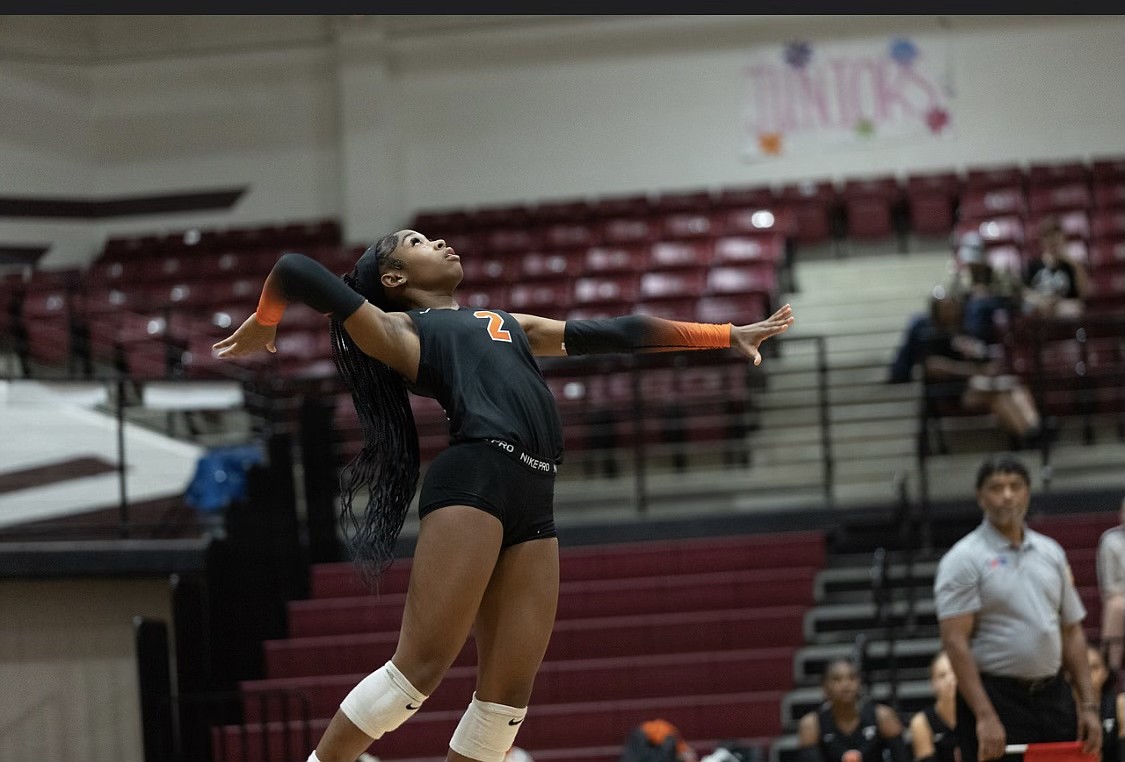
TEXARKANA, Texas — Texas High was well-represented in the District 10-5A all-district volleyball selections, with two players earning superlative honors and several more recognized across the first and second teams.
Senior Kyleigh Perkins was named Co-Utility Player of the Year, sharing the award with Lufkin’s Akira Smallwood. Taryne Stiger, also a senior, earned Co-Blocker of the Year alongside Hallsville sophomore Kylee Fernandez.
Eva Treadway and Sydney Woods were selected to the first team, while Kenley Dewberry and Cruz Hopkins were named to the second team.
Four players earned honorable mention: Karasha Hayes, Zanasia Nelson, Deja Aubrey and Lexie Burton.
Texas High also had 12 players named to the Academic All-District team: Aubrey, Burton, Madelyn Carroll, Dewberry, Hopkins, Phoenix Jones, Acasia Nelson, Zanasia Nelson, Perkins, Stiger, Treadway and Woods.
Hallsville’s Kaycin Farrell was named Most Valuable Player, and Hallsville head coach Tara Wager and her staff earned Coaching Staff of the Year.
——
2025 District 10-5A All-District Honors
Most Valuable Player: Kaycin Farrell – Hallsville – JR. No. 25
Most Valuable Hitter: Chesney McCullough – Lufkin – SR. No. 4
Most Valuable Setter: Lilly Fry – Hallsville – SR. No. 3
Co-Utility Player of the Year: Kyleigh Perkins – Texas High – SR. No. 2 and Akira Smallwood – Lufkin – SR. No. 12
Libero of the Year: Danika Cantu – Marshall – JR. No. 13
Co-Blocker of the Year: Taryne Stiger – Texas High – SR. No. 6 and Kylee Fernandez – Hallsville – SO. No. 12
Server of the Year: Ava Wise – Whitehouse – SR. No. 2
Newcomer of the Year: Ja’Lee Flores – Tyler – SR. No. 9/17.
Coaching Staff of the Year: Tara Wager – Hallsville
——
1st Team All-District
Lyla Evans – Hallsville
Madi Farrell – Hallsville
Tailor Benson – Hallsville
Eva Treadway – Texas
Sydney Woods – Texas
Ellie Cooley – Whitehouse
Vaida Hocker – Whitehouse
Lily Holzbauer – Whitehouse
Kaylee Garner – Whitehouse
Savannah Bergman – Lufkin
Aleciera Smallwood – Lufkin
Kinlee Smith – Marshall
Jazlyn Duran – Tyler
Kaelyn McLean – Tyler
Emmy Finnerude – Nacogdoches
——
2nd Team All-District
Livi Vineyard – Hallsville
Miller Goswick – Hallsville
Caroline Slaten -Hallsville
Kendall Bostik – Whitehouse
Ava Reese – Whitehouse
Jazlynn ONeal – Lufkin
ZaNyia Johnson – Lufkin
Kenley Dewberry- Texas High
Cruz Hopkins – Texas High
Ella Kate Runnels – Marshall
Addi Watkins – Marshall
Ruby Hulen – Mount Pleasant
Miyah Amador-Farrier – Mount Pleasant
Zarriya Swindle – Nacogdoches
Kinsley Fields – Nacogdoches
Elaine McCown – Jacksonville
Gretchen Ault – Jacksonville
Ryan Vega – Tyler
Marilyn Cardenas – Tyler
——
Honorable Mention
Karasha Hayes – Texas High
Zanasia Nelson – Texas High
Deja Aubrey – Texas High
Lexie Burton – Texas High
——
Academic All-District
Texas High: Deja Aubrey, Alexeia Burton, Madelyn Carroll, Kenley Dewberry, Cruz Hopkins, Phoenix Jones, Acasia Nelson, Zanasia Nelson, Kyleigh Perkins, Taryne Stiger, Eva Treadway, Sydney Woods


Sports
USA Volleyball Mourns the Passing of Hall of Fame Leader and Visionary Glen Lietzke
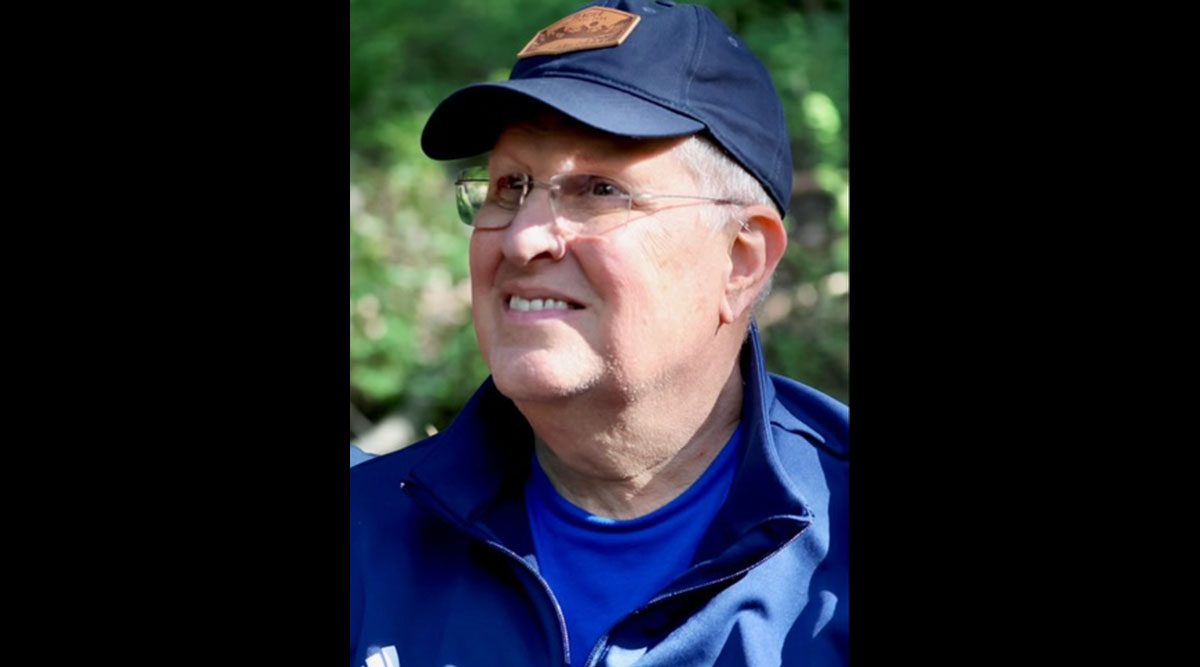
COLORADO SPRINGS, Colo. (Dec 27, 2025) – USA Volleyball is deeply saddened by the passing of longtime volleyball leader Glen Lietzke, a respected and influential figure whose dedication to the sport touched athletes, families, and organizations nationwide.
A true champion and pioneer of the game, Lietzke’s service spanned decades and encompassed numerous initiatives to grow and strengthen the volleyball community. He was a cornerstone of the sport, the founder of Austin Juniors Volleyball, and an AVCA Hall of Fame inductee.
In 1998, he was inducted into the USA Volleyball Hall of Fame as a recipient of the USA Volleyball George J. Fisher Leadership Award. His impact was felt profoundly at the national level through his work with First Point Volleyball, now an arm of USA Volleyball, and his service on the USA Volleyball Foundation Board, where his vision helped expand opportunities for countless young athletes.
He was a longtime coach, including collegiate stints at the University of Wisconsin-River Falls, Southwest Missouri State University, and the University of Texas. He also coached many teams at Austin Juniors and coached with the U.S. junior and youth national teams.
“Glen Lietzke always amazed me with the depth of his innovation and the lasting influence he had on our sport, shared John Speraw, President and CEO of USA Volleyball. “But what impressed me most in recent years was his generosity and the quiet way he made an impact. I always knew I could call Glen for honest insight and thoughtful perspective. He worked behind the scenes, never seeking attention, always focused on making things better for others. That is what our sport has lost, a humble icon and we have lost a good friend.”
Lietzke was a tireless advocate for the growth of boys and men’s volleyball, investing resources and leadership to help programs thrive in regions where few opportunities previously existed. At the time of his passing, he was actively leading preparations for January’s Southwest Boys Classic, one of the premier events on the national calendar.
Beyond his professional achievements, Glen was a trusted friend to the First Point Volleyball and a visionary leader whose belief in what was possible strengthened the sport. His legacy is one of generational impact; a volleyball community made better, more inclusive, and more vibrant through his lifelong commitment.
USA Volleyball extends its heartfelt condolences to his wife, Kathy, his children, Nathan and Lauren, the Austin Juniors community, and the many athletes, coaches and colleagues inspired by his life and work.
Sports
Kentucky Wildcats volleyball player transferring to Louisville
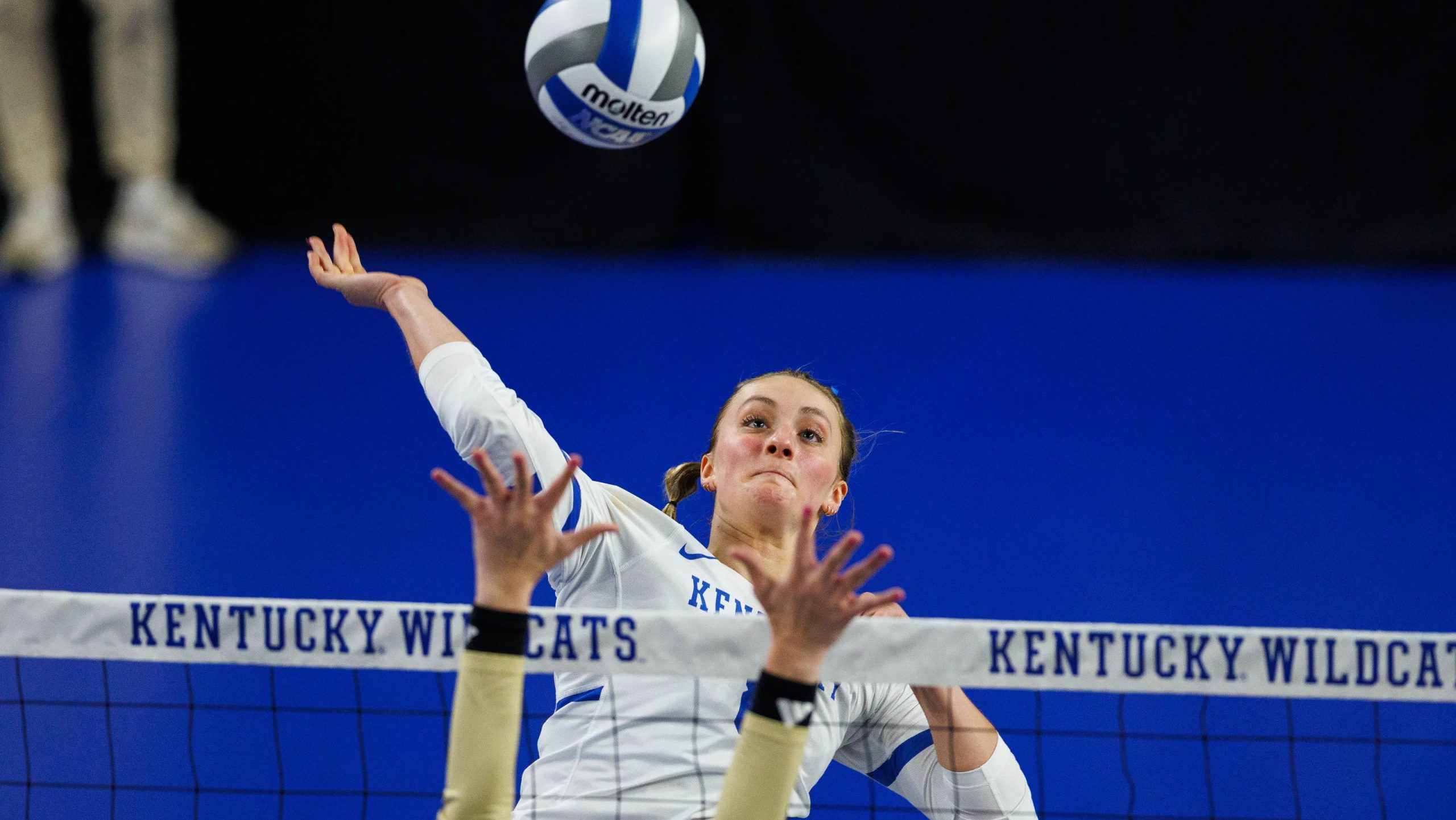
Dec. 27, 2025, 1:22 p.m. ET
Just a few days ago, coach Craig Skinner and the Kentucky Wildcats volleyball team got a huge lift by landing All-ACC outside hitter Morgan Gaerte from the transfer portal. However, they will also be losing Brooke Bultema. The sophomore middle blocker announced she was transferring, and very quickly found a home with the Louisville Cardinals.
Bultema didn’t see a lot of action down the stretch of the season, but she played well when she was on the court. In 57 sets played, she recorded 92 kills and 55 blocks. Her .264 hit percentage was top five on the team among regular players, and her 1.61 kills per set was fourth. She was second on the team, behind only Lizzie Carr, with .96 blocks per set.
In a message to Big Blue Nation, Bultema said:
Thank you will never be enough. This place, these people, this commonwealth, will forever hold a special place in my heart. Leaving Kentucky was the hardest decision of my life. Not only because I was leaving a school I loved, but people that have forever changed my like for the better.
Bultema joins Louisville with two years of eligibility remaining. She is a very good addition for them, and a tough loss for the Wildcats. We wish her the best at her new home.
-

 Motorsports3 weeks ago
Motorsports3 weeks agoSoundGear Named Entitlement Sponsor of Spears CARS Tour Southwest Opener
-

 Motorsports3 weeks ago
Motorsports3 weeks agoDonny Schatz finds new home for 2026, inks full-time deal with CJB Motorsports – InForum
-

 Rec Sports3 weeks ago
Rec Sports3 weeks agoDavid Blitzer, Harris Blitzer Sports & Entertainment
-

 Motorsports3 weeks ago
Motorsports3 weeks agoRick Ware Racing switching to Chevrolet for 2026
-

 NIL2 weeks ago
NIL2 weeks agoDeSantis Talks College Football, Calls for Reforms to NIL and Transfer Portal · The Floridian
-
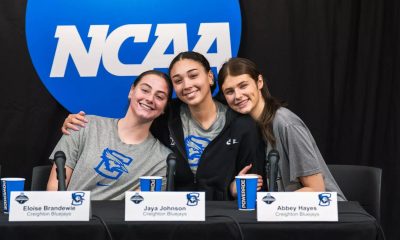
 Sports2 weeks ago
Sports2 weeks ago#11 Volleyball Practices, Then Meets Media Prior to #2 Kentucky Match
-

 Motorsports2 weeks ago
Motorsports2 weeks agoSunoco to sponsor No. 8 Ganassi Honda IndyCar in multi-year deal
-
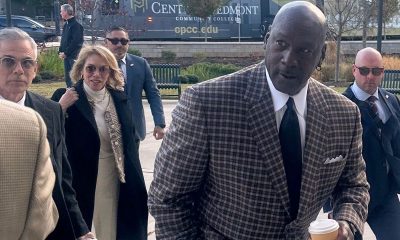
 Motorsports3 weeks ago
Motorsports3 weeks agoNASCAR owes $364.7M to teams in antitrust case
-
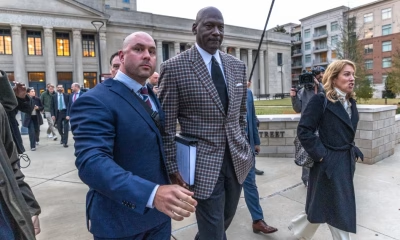
 Motorsports2 weeks ago
Motorsports2 weeks agoNascar legal saga ends as 23XI, Front Row secure settlement
-
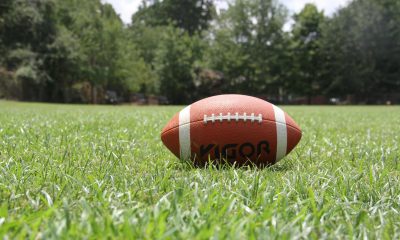
 Rec Sports3 weeks ago
Rec Sports3 weeks agoWhy the Texas Sport for Healing Fund Should Return – The Daily Texan
































